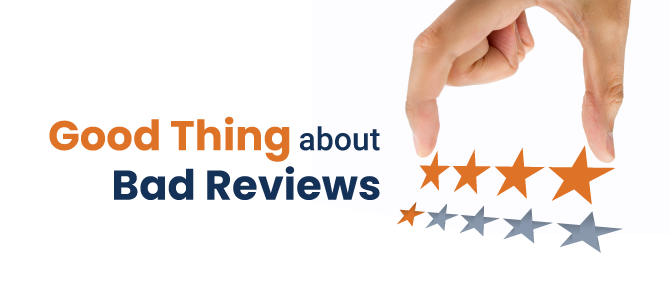The Good Thing about Bad Reviews
Bad reviews really shouldn’t get such a bad rep. Reevoo, a social commerce company, recently ran a study and found that 68% of consumers were more trusting of a company’s reviews if both positive and negative reviews were displayed...
Bad reviews really shouldn’t get such a bad rep.
Reevoo, a social commerce company, recently ran a study and found that 68% of consumers were more trusting of a company’s reviews if both positive and negative reviews were displayed.
This creates an interesting dilemma because most business owners are very concerned when it comes to negative reviews. While reviews should still be carefully managed, they found that a few negative reviews can actually increase conversion rates by as much as 67%.
Surprisingly, the secret to optimizing your sales may be found in an imperfect star rating. Based on research from Northwestern University, consumers are more likely to make a purchase if a product has a rating between 4.2 and 4.5 stars. As you approach a perfect 5-star rating, the likelihood of purchase can actually decline, because consumers start to become concerned that the reviews may be “too good to be true”. In fact, 95% of consumers assume fake reviews if there are no negative ratings.
Trust isn’t the only factor increased by negative reviews. Engagement also increases significantly when negative feedback is available. Consumers looking for negative reviews spend up to 26 minutes on a website while other consumers only spend 4.6 minutes.
Why Are Consumers Reading Bad Reviews, and How Can It Help Me?
There are actually two very compelling reasons why consumers actively look for and read negative reviews, and both of them can work directly in your favor:
1. To discover any common issues with a product or the company selling the product. If consumers know what to expect and how to potentially avoid or deal with any problems that they might find, then the fear of the unknown no longer becomes an issue for them. They simply want to get a balanced perspective. Consumers inherently know that it’s highly unlikely that any company or product is going to be perfect, and reading negative feedback helps them effectively manage their expectations.

 Drive More Visibility, Traffic, and Sales
Drive More Visibility, Traffic, and Sales
